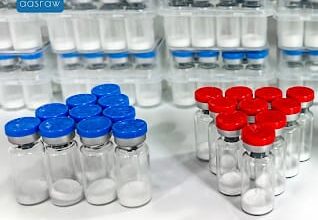Handyman cabinet repair

Assuming that you love the accommodation of your pullout wooden cutting board yet don’t utilize it since it’s finished and messy, attempt this gourmet specialist-endorsed, two-step process. Essentially, Handyman cabinet repair scours the board with a lemon and a heap of sea salt, then apply mineral oil.
The coarse ground salt is a brilliant grating, and the citrus extract kills microorganisms. When the stains are gone, flush the board and let it dry. Mineral oil keeps the wood from retaining finishes.
Adjust hinges on misaligned doors
In the event that your bureau entryways are messed up and you have European-style pivots, fortune has smiled on you. Euro pivots are intended for simple change. Try not to allow their intricate hopes to unnerve you; you should simply turn a couple of screws, and any slip-ups you make are not difficult to address. The Euro pivot displayed here changes in three bearings. Others change in two headings. One way or the other, it’s an experimentation interaction: You make changes, close the way to check the fit, then change again until it’s right.
First:
On the off chance that the entryway isn’t flush with the entryways close to it, change the profundity screw. This screw moves the entryway in or out. Some profundity screws move the entryway as you turn them. In any case, with most, you need to loosen the screw, prod the entryway in or out, and after that fix the screw. On the off chance that your pivots don’t have profundity screws, begin with the side screws.
Second,
On the off chance that the entryway is warped—not standing lined up with neighboring entryways or square with the bureau—change the side screw. This moves the entryway from one side to another. Now and then, you need to relax the profundity screw somewhat to change the side screw.
Third
Assuming that the entryway is flush and lined up with different entryways yet excessively high or low, utilize the mounting screws to raise or lower the mounting plates. Relax the screws at the two pivots, slide the entryway up or down and fix the screws. Some mounting plates change by turning a solitary screw.
Adjust or replace bad latches
Most more up to date cupboards have self-shutting pivots that hold the entryways shut. Others have attractive or roller gets. A catch that no longer keeps an entryway shut is either broken or messed up. Gets are secured with two screws, so it is easy to supplant a harmed get.
Change is comparably basic, however you could need to correct the catch two or multiple times before you hit the nail on the head. Relax the screws, move the catch in or out, and fix the screws. In the event that the entryway doesn’t close firmly, attempt once more.
Assuming you have an entryway that is somewhat twisted and won’t lie level against the bureau, take a stab at adding an attractive catch at the pain point. Frequently the magnet is sufficiently able to pull the entryway in close.
Add bumpers to banging doors
Worn out on standing by listening to those bureau entryways bang shut? Strip and-stick entryway and Handyman cabinet repair guards are the arrangement. Ensure the rear of the entryway is perfect so the guards will stick, then, at that point, place one at the top corner and one more at the base.
Supplant broken down cabinet slides
Assuming you observe that slides are twisted, rollers are broken or rollers won’t turn even subsequent to greasing up, substitution is the best arrangement. To keep the undertaking straightforward, purchase new slides that are indistinguishable (or practically indistinguishable) from the old ones. Like that, substitution is a simple matter of unscrewing the old and screwing on the new.
Eliminate a handyman cabinet repair track and a bureau track and take them shopping with you. Whether you have sets of side-mounted slides (as displayed here) or single, focus mount slides, there’s a decent opportunity you’ll track down fundamentally the same as slides at a home place. In the event that you can’t track down them, check with a bureau materials provider (in the Yellow Pages under “Cupboards, Equipment and Supplies” or on the web).
Required Tools for this Project
Have the important devices for this DIY project arranged before you start — you’ll save time and dissatisfaction.
• 4-in-1 screwdriver
• Cordless drill
• Hammer
• Utility blade
Required Materials for this Project
Stay away from latest possible moment shopping trips by having every one of your materials prepared early. Here is a rundown.
• Entryway guards
• Cabinet slides
• Filler pencil
• Finish nails
• Genuine salt
• Lemon
• Mineral oil
• Splash grease
• Stain marker
• String lok
• Wood stick




